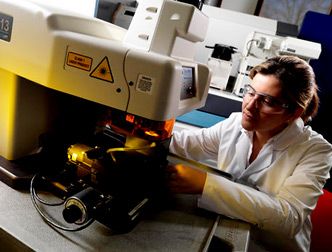Scientists have learned to create a map of human movements using the analysis of his hair
Last reviewed: 16.10.2021

All iLive content is medically reviewed or fact checked to ensure as much factual accuracy as possible.
We have strict sourcing guidelines and only link to reputable media sites, academic research institutions and, whenever possible, medically peer reviewed studies. Note that the numbers in parentheses ([1], [2], etc.) are clickable links to these studies.
If you feel that any of our content is inaccurate, out-of-date, or otherwise questionable, please select it and press Ctrl + Enter.
Scientists have learned to create a clear map of human movements by analyzing his hair; The method is based on the fact that the isotopic composition of water is unique for each locality and is reflected when this moisture enters the human body at the atomic composition of the hair, according to the website of the University of Alaska (UAF, USA).
Even though many people consume bottled water and at the same time eat bananas brought from the tropics, hair contains 100% of the isotope water trace from places where a person has lived for at least a few days, the report says.
The hair retains the chemical traces of all substances that enter the human body, including those that come with foods and drinks consumed as food. Due to this, based on the results of isotopic analysis, it is possible to compile a map of human movements over the past few years with reference to those reservoirs near which he lived for at least a week. Water, which gets into the human body every day, has a completely unique "hydrogen trace", which is confined to a geographical area. Atomic or isotopic composition of water at any level of purification and filtration is preserved.
"When a person begins to eat differently or drink water, the isotopic composition in the hair changes," says Michel Chartrand, author of the technique, and an employee of the University of Ottawa, whose words are contained in this report.

Chartrand collected more than 500 hair samples from people who live in different regions of Canada for 4 years. And she compiled an "isotope map" of the country based on the results of various laboratory tests, which will help the police in the investigation of various kinds of crimes. As an experiment, she also restored the woman's movements for the investigation of the murder for 43 months. To death. The isotope analysis of the hair of this woman compared to the data of the map compiled by Chattrand revealed that the woman moved 7 times during this period, while the time of movement was established with an accuracy of one month.
The time period for which the person's movements can be traced depends, first, on the length of the hair (the shorter they are shaved, the "horizon" of the past, in which scientists can look closer). In addition, the speed of their growth (hair on average on the head grows by 1-1,5 cm per month) also matters. As Chartrand explained, for isotope analysis, a hair strand is cut into the same pieces, for example, one centimeter - analyzing the chemical composition of the hair at equal intervals, it is not so difficult to track its changes.
In natural reservoirs there are three isotopes of hydrogen - protium, whose atomic mass is about 1, deuterium (about 2) and radioactive tritium (mass about 3). This hydrogen is part of almost all organic substances and is found in various living cells, where hydrogen accounts for almost 50% of the total number of atoms. The most unique isotopic composition makes it possible to track "where from" a particular sample of fluid comes from.

 [
[